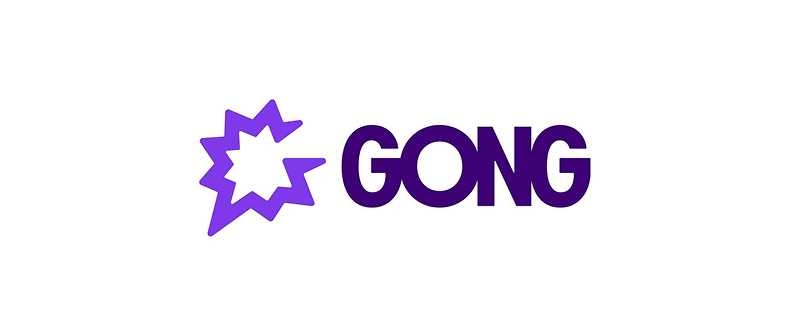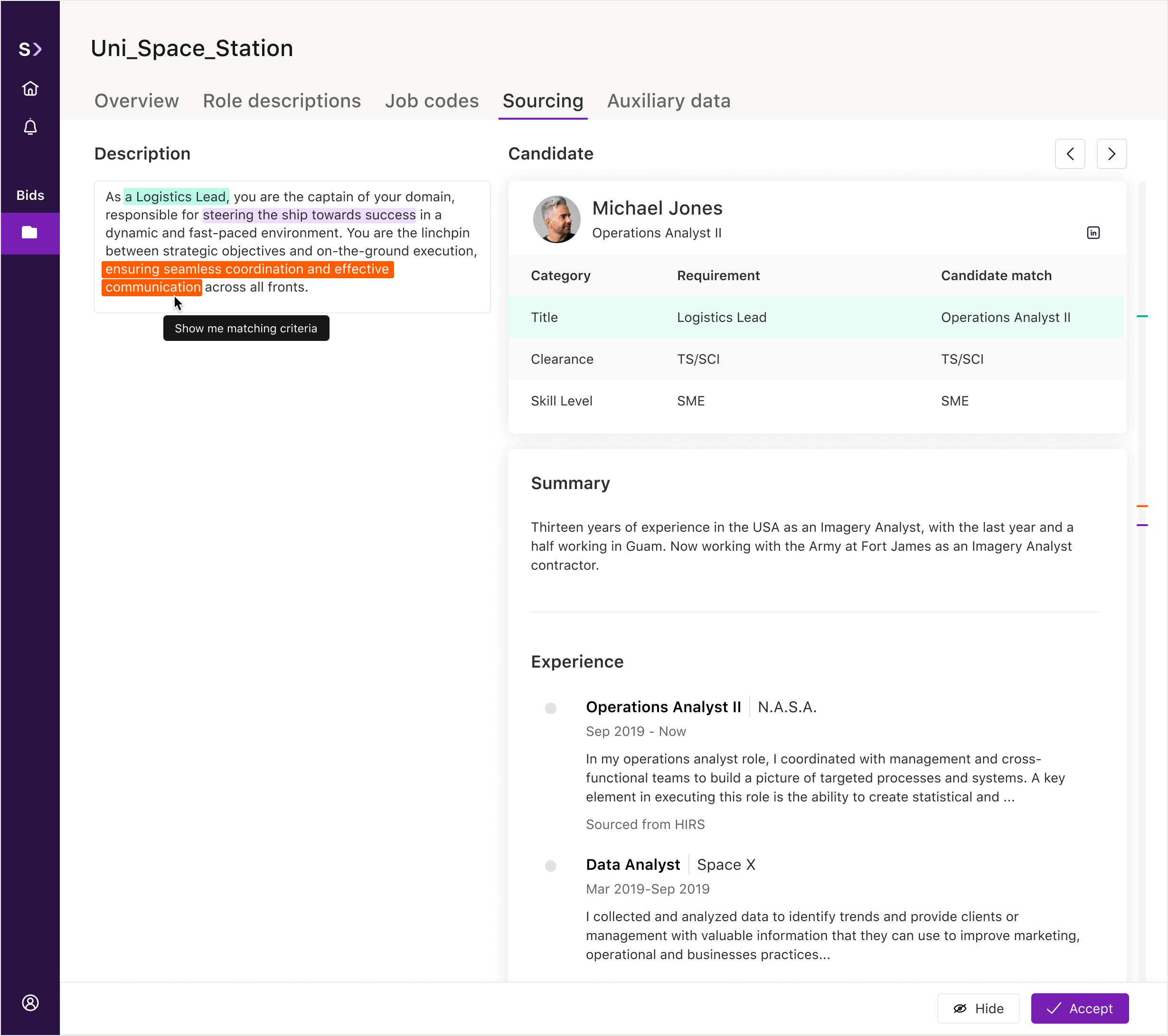Empowering public sector staffing through AI
Role:
Senior Product Designer
Team:
1 Principal Product Manager
2 Software Engineers
Timeframe:
3 months
Reduced time-to-source by 40% and cut the time to write Functional Role Descriptions by 75%, streamlining recruiting and alignment.
I led research and co-creation workshops to uncover user needs, validated concepts through testing, designed the final UI, and contributed components to SeekOut’s design system for consistency and scale.
The Opportunity
This project focused on improving the recruiting process in the public sector, where recruiting companies must compete for government contracts by preparing and presenting staffing plans—often with limited insight into project requirements.
It also opened a path for SeekOut to enter the public sector staffing space by connecting a new 0–1 product to its internal talent suite of tools.
The Hypothesis
We believe that by combining our sourcing expertise and AI with historical data from previous government briefs, we can help recruiters identify qualified candidates more efficiently for each role in a public sector project. This will expedite the staffing process and increase competitiveness for firms bidding on government contracts.
We’ll know this is true when the time it takes to find qualified candidates is reduced by at least 30%.
Research
Reading the government documentation on the matter on websites such as FEDSIM.
Listened to hours of Gong recorded conversations with government recruiting contractors.
Talking to customers in the A&D space to learn about their pain points when working with the government.
The Staffing Process
We identified three key phases in the staffing process for government contracts.
In Phase 1, Formulating, companies begin drafting mock staffing plans up to a year in advance, guided by historical data and ongoing updates from FEDSIM.
In Phase 2, Bid and Proposal, final RFPs are released and companies adjust their plans, fine-tuning details to close any remaining gaps.
Phase 3, Staffing, begins once a bid is awarded, and companies move forward with talent acquisition.
Users
Goal:
Identifies candidates and compiles their information in a workbook for the recruiter.
Pain-point:
Spends significant time piecing together qualifications due to the lack of a single source of truth.
The Sourcer
Goal:
Prequalifies and presents candidates to the Recruiting Lead in a newly created workbook with approved candidates.
Pain-point:
Manages candidate data, which becomes increasingly time-consuming and inefficient as the project evolves.
The Recruiter
Goal:
Works with stakeholders to identify top-tier candidates and update bidding proposals with candidate summaries, role descriptions, and the latest brief details.
Pain-point:
Assembles bidding proposals which can be a slow and tedious process, and requires cross-referencing multiple workbooks approved by stakeholders.
The Recruiting Lead
Insights
Collaboration is key
There can be anywhere between 10 to 30 people which will impact the project outcome.
Outdated workflow
The people working on these projects will create hundreds of Excel files to share with multiple teams.
Messy Data
Finding the right information to update during the review process is time-consuming and prone to human error.
Challenges
Validating assumptions
Companies start bid planning a year before the government releases the final staffing plan. Having a pre-defined plan based on historical information is key to winning.
Disconnected information
A team will review multiple workbooks to gather information to validate a single qualified candidate for a role out of hundreds.
Lack of support
Small changes can have a huge impact on staffing plans. Currently, there is no record to help outline how wide these changes can influence progress.
Definition
I synthesized research findings into clear insights that guided design decisions throughout the project. Collaborating closely with the product manager and engineers, I participated in weekly co-creation sessions where we shared ideas, aligned on priorities, and refined our understanding of user needs together.
To validate our direction early and often, I created wireframes and tested them directly with customers, using their feedback to iterate quickly and ensure the product met both user expectations and business goals.
Core Experience
Co-creation sessions
Development
Once we aligned on the MVP flow and a prioritized list of features, I moved into higher-fidelity design exploration to bring the experience to life. This phase included rapid prototyping, which allowed us to quickly test key interactions and gather early feedback from clients. These prototypes served as a critical tool for validating our ideas, uncovering usability issues, and ensuring our solutions were both intuitive and aligned with user needs.
Mid-fidelity designs.
Delivery
Schemas
As a project matures, new information is shared with recruiting companies to help refine roles. I created a self-served schema builder so users can introduce this new information to their staffing plan to reinforce candidate qualifications.
Clean the data
Job codes are unique to a role. However, projects can have multiple roles with similar criteria and be matched with different candidates. Allowing users to link unique codes to a single role can help avoid double staffing per role.
Generate role descriptions
Composing role descriptions is a collaborative effort. Before SeekOut, teams had to gather specific information from multiple worksheets. With AI, we can generate descriptions as a starting point and allow users to modify them to best fit their needs.
Approve candidates
The last step is selecting candidates for each role. When job codes, role descriptions, and schemas work together, we can present candidates who match the criteria. Furthermore, we can suggest the best qualifications substitutions for the role for a wider range of options.
Impact
The total number of hours working on a bid during the first 2 weeks was reduced by 40%.
The quality of role descriptions created was of higher quality and comprehension.
Instant user adoption increased interest in the rest of SeekOut’s business offerings.
Next Steps
The MVP allowed us to move fast and wide. After our initial offering was validated we had a chance to go deep in our design progressions that were conceptualized along as we learned from our conversations with clients.



















